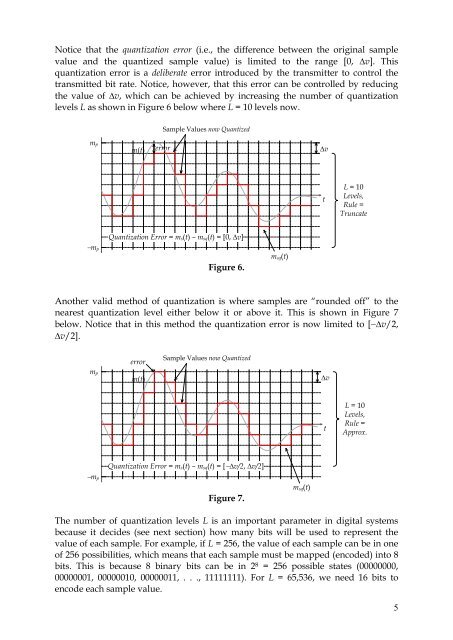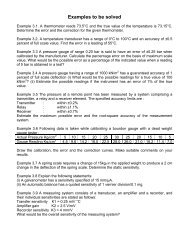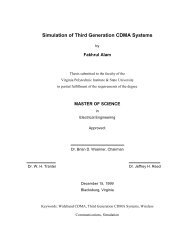Communications I Dr. Mohammed Hawa Introduction to Digital - FET
Communications I Dr. Mohammed Hawa Introduction to Digital - FET
Communications I Dr. Mohammed Hawa Introduction to Digital - FET
Create successful ePaper yourself
Turn your PDF publications into a flip-book with our unique Google optimized e-Paper software.
Notice that the quantization error (i.e., the difference between the original samplevalue and the quantized sample value) is limited <strong>to</strong> the range [0, v]. Thisquantization error is a deliberate error introduced by the transmitter <strong>to</strong> control thetransmitted bit rate. Notice, however, that this error can be controlled by reducingthe value of v, which can be achieved by increasing the number of quantizationlevels L as shown in Figure 6 below where L = 10 levels now.Sample Values now Quantizedm pm(t)errorvtL = 10Levels,Rule =TruncateQuantization Error = m s(t) – m sq(t) = [0, v]-m pm sq(t)Figure 6.Another valid method of quantization is where samples are “rounded off” <strong>to</strong> thenearest quantization level either below it or above it. This is shown in Figure 7below. Notice that in this method the quantization error is now limited <strong>to</strong> [-v/2,v/2].errorSample Values now Quantizedm pm(t)vtL = 10Levels,Rule =Approx.Quantization Error = m s(t) – m sq(t) = [-v/2, v/2]-m pm sq(t)Figure 7.The number of quantization levels L is an important parameter in digital systemsbecause it decides (see next section) how many bits will be used <strong>to</strong> represent thevalue of each sample. For example, if L = 256, the value of each sample can be in oneof 256 possibilities, which means that each sample must be mapped (encoded) in<strong>to</strong> 8bits. This is because 8 binary bits can be in 2 8 = 256 possible states (00000000,00000001, 00000010, 00000011, . . ., 11111111). For L = 65,536, we need 16 bits <strong>to</strong>encode each sample value.5
















